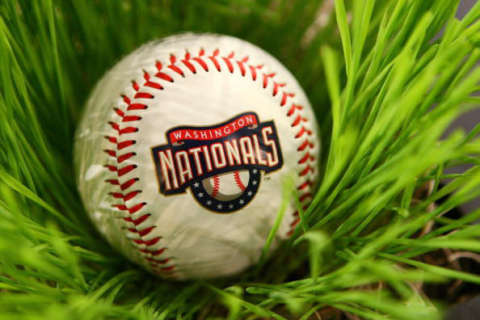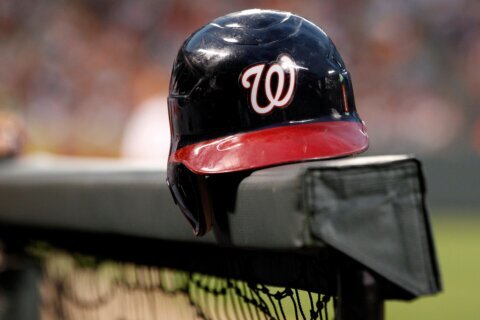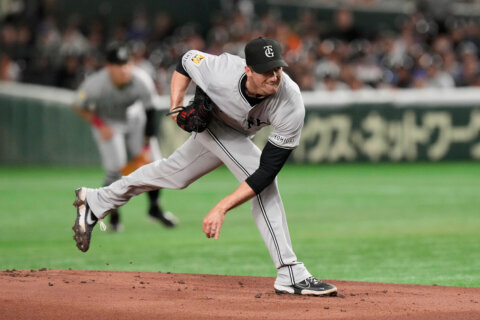WASHINGTON — Late Sunday evening, the Washington Nationals made their biggest free agent signing ever, inking Max Scherzer to a seven-year deal worth $210 million.
While the deal made many wonder why General Manager Mike Rizzo would spend exorbitantly on a position that already appeared to be the club’s biggest strength, landing Scherzer opened a number of potential trade doors for the Nationals to explore.
First, let’s get back to the deal itself for moment. Even with the total value spread out over 14 years (which translates into $185 million in today’s dollars with a $26.4 million average annual value), it still crushes Jayson Werth’s $126 million contract, for which the Nationals were criticized for at the time. It is a tremendous amount of money to pay for a pitcher, especially one who will spend the entirety of those seven years in his 30s.
Of course, Scherzer isn’t just any pitcher. He’s led the majors in strikeouts during the past three seasons with 723, nearly 100 more than Stephen Strasburg. He’s won 55 games, also the most for any pitcher in baseball. His 127 ERA+ is tied for sixth over that stretch among those with at least 500 innings pitched. He’s a true No. 1 starter in a rotation that already has at least two of them.
Sure, the Nats could stand pat. But that would seem to leave them with an overabundance of pitching while still not really addressing the (still) weak spot in the infield, or the potential impending hole at shortstop. And, as the Scherzer signing shows, Rizzo is not generally one for taking whatever is left on the scrap heap to address a need.
Future considerations aside, the most important valuation in a potential deal is this: Is the talent and output gap between a premier middle infielder and Yunel Escobar greater than that of a front-line starter and pitcher Tanner Roark? If the answer is yes, then the decision to trade a top starter should be automatic. Any future years of team control and/or salary relief are simply icing on the cake, fitting into Rizzo’s organizational philosophy of fielding the best team possible now with an eye always on the future.
With that in mind, here are four potential deals to keep an eye on before the team departs for Florida next month.
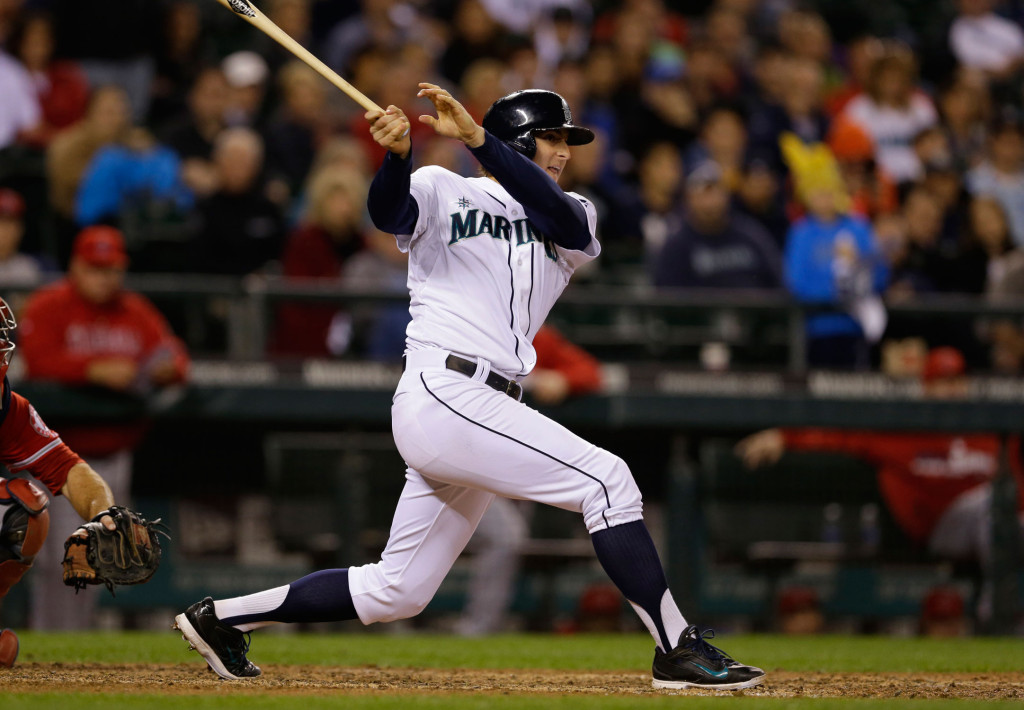
RHP Jordan Zimmermann to Seattle for INF Brad Miller, RHP Danny Farquhar
The most likely trade scenario would seem to involve offloading a starting pitcher, and Zimmermann seems to be the prime candidate, given his impending free agency at the end of the season. Owed $16.5 million this year, clearing Zimmermann’s salary more than covers what Washington has pledged to Scherzer this season while ensuring a return for a soon-to-be free agent.
Earlier this offseason, it was reported that the Nationals and Mariners discussed a two-for-two swap of Zimmermann and Ian Desmond for Brad Miller and top Seattle pitching prospect Taijuan Walker, but the M’s backed out. A more viable deal including only Zimmermann (arguably the more valuable piece going out) and Miller (arguably the less valuable piece coming back) could make more sense, especially if Seattle was willing to include a relief arm. Danny Farquhar fits the bill as a high strikeout righty who is neither slotted as the closer or the primary set-up man, but helps mitigate the loss of Tyler Clippard.
Moreover, Miller is just 24, won’t be arbitration eligible until 2017 or a free agent until 2020, giving Washington a young, cost-controlled middle infielder for six seasons. He can play second base in the near term and slide to shortstop if need be in the future. And he’s a left-handed bat, providing balance to a lineup that’s become increasingly righty heavy.

RHP Jordan Zimmermann to St. Louis for INF Kolten Wong, RHP Carlos Martinez
Would the Nationals really make a deal with the Cardinals? While it’s always nice to keep your blockbuster trades between leagues, this move could address needs for both clubs. The Cardinals have been looking for another front-line starter while debating on whether to try to move the talented Martinez out of the bullpen or trade him. Zimmermann gives them a sure thing.
Meanwhile, the Nats could keep Martinez as a reliever to help them this year, then explore moving him to the rotation next year if Doug Fister walk as a free agent. Kolten Wong, meanwhile, gives the Nats a high upside, second baseman who posted a 2.0 fWAR season as a 23-year-old under with five years of team control. The Cardinals picked up Ty Kelly from the Mariners in the offseason, and he could be in the running for the second base job along with the one whose name we do not speak (Pete Kozma).

RHP Jordan Zimmermann to Boston for INF Mookie Betts
As Boston looks to rebound from a down year in 2014, Zimmermann’s name has already circulated in potential trade rumors to the Red Sox. If they’re really serious about winning now, a one-for-one swap with the very highly-regarded Mookie Betts would get the job done.
A second baseman by trade who has also filled in around the outfield (and could again, depending on Jayson Werth’s health), Betts is a versatile, high ceiling 22-year-old who slashed .315/.408/.470 in his minor league career before a successful stint in the majors last season. He averaged about 30 steals and nine homers in the minors as well, potentially giving the Nats a long-term investment who could contribute immediately. He’s also blocked at second behind Dustin Pedroia, who is signed in Boston through 2021.
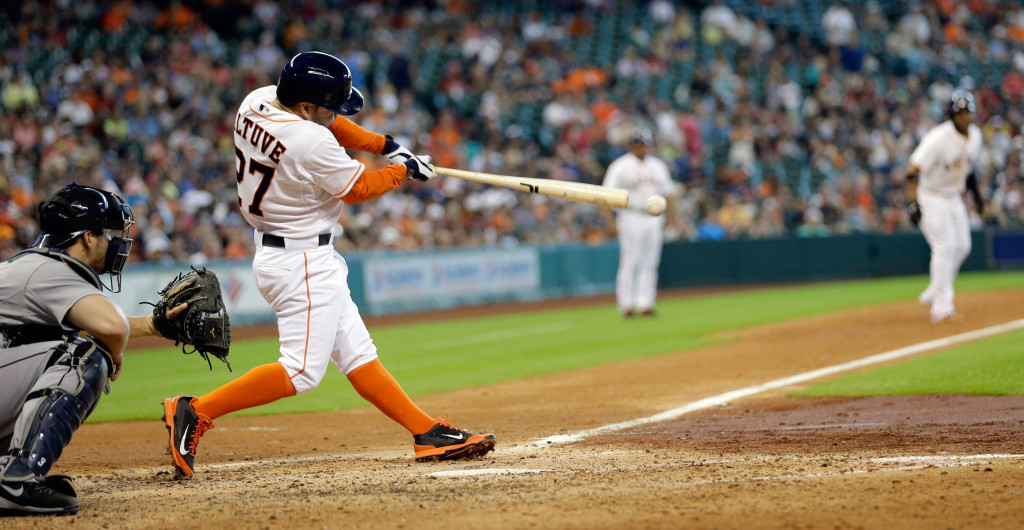
RHP Stephen Strasburg to Houston for INF Jose Altuve
Before you balk at this one, consider a few things. The Astros met with Max Scherzer this offseason and have been looking for ways to upgrade their rotation over what amounts to a bunch of prospects. Strasburg gives them a true, front-end starter for the next two seasons before he hits free agency, accelerating their competitive window.
Plus, there are reports of a rift between Strasburg and the Nats organization. Whether or not that’s true, Scott Boras’ clients simply don’t sign extensions (i.e. Scherzer). So there’s no reason to believe Strasburg would stay in Washington after 2016 even if the shutdown in 2012 saved his arm for future seasons. Dealing him frees up potential money to re-sign Zimmermann, or any of Washington’s other young talent.
Jose Altuve, meanwhile, is coming off a breakout season that saw him lead the league in hits and steals and win a batting title. He’s unimpressive, but adequate, defensively at second and somehow won’t even turn 25 until May. The diminutive crowd favorite is also under an incredibly team-friendly extension that will pay him $10.5 million for the next three years, with options of $6 million and $6.5 million for 2018 and 2019.
Once Denard Span hits free agency after the season, the Nats would be left without a leadoff-type hitter in their lineup. Altuve fills that hole and turns the biggest lineup weakness into another huge strength.
Whether the Nationals make any of the above moves (or one similar to them) or head to Spring Training with the team they currently have, the Scherzer signing has clearly opened doors for Rizzo that previously may have been closed.
Follow @WTOP and @WTOPSports on Twitter and WTOP on Facebook.

